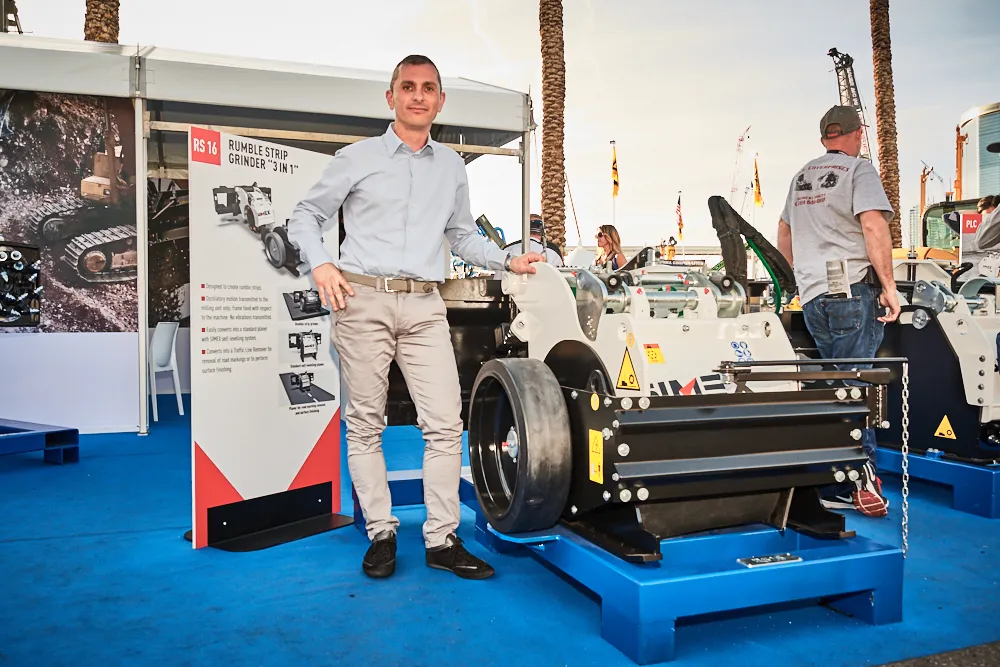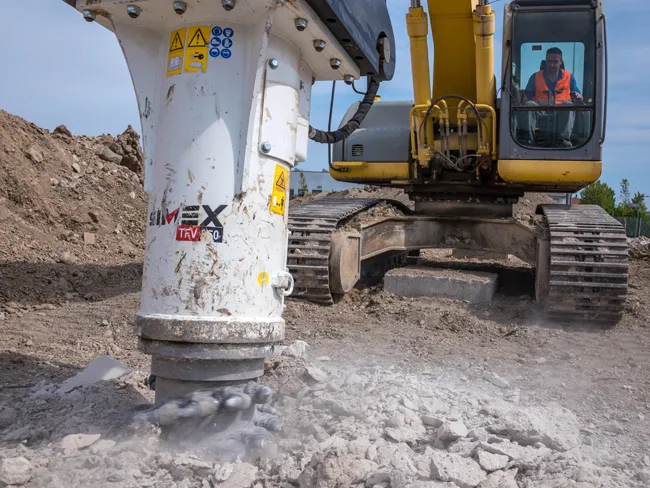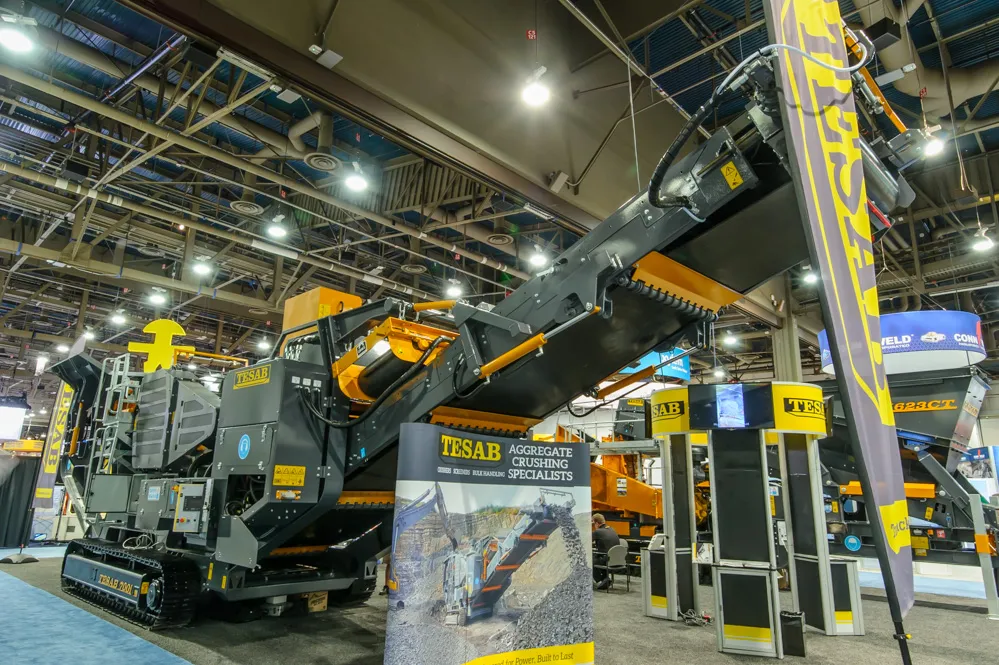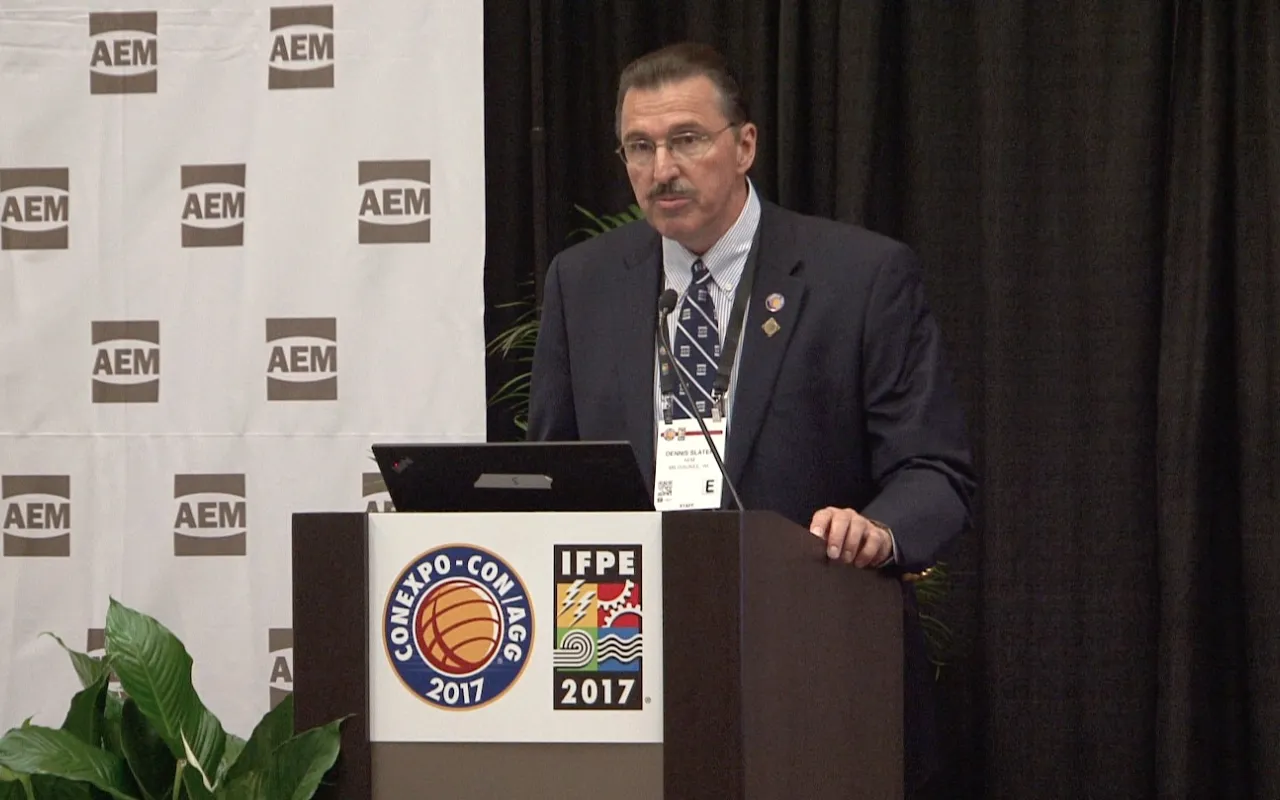
Italian attachment specialist
“We developed the machine in the second half of last year,” said Federico Tamburri, sales director for Simex. “We tested it at the beginning of 2017 and then sent the first machine to the US.” A contractor in Ohio has already put the machine to work.
Simex has designed a couple of clever features into the attachment. First, the drum speed of the planer is independent of the machine pulling it - which ensures that the rumble strip lengths are always constant; the mechanism for this is under patent.
Second, the vibrations from the milling unit do not transfer to the prime mover as the milling unit’s frame remains stable. This prevents discomfort for the driver and also reduces wear and tear on the main machine. The length of the strips, as well as the distance between strips, can be varied to meet standards in different countries.
Interest in Las Vegas has been high: “What we are seeing here at the show is a good response from visitors,” said Tamburri. “People are very curious and are asking about the price, and asking about lead times because a lot of these jobs have already been commissioned. Some people told me that this type of machine was top of their list.”
The US is an important market for Simex, taking over 40% of the machines its makes. However, many of the machines at work in North America are not Simex-badged because the manufacturer has agreements with major OEMs relating to its core machines such as planers and wheel saws.









